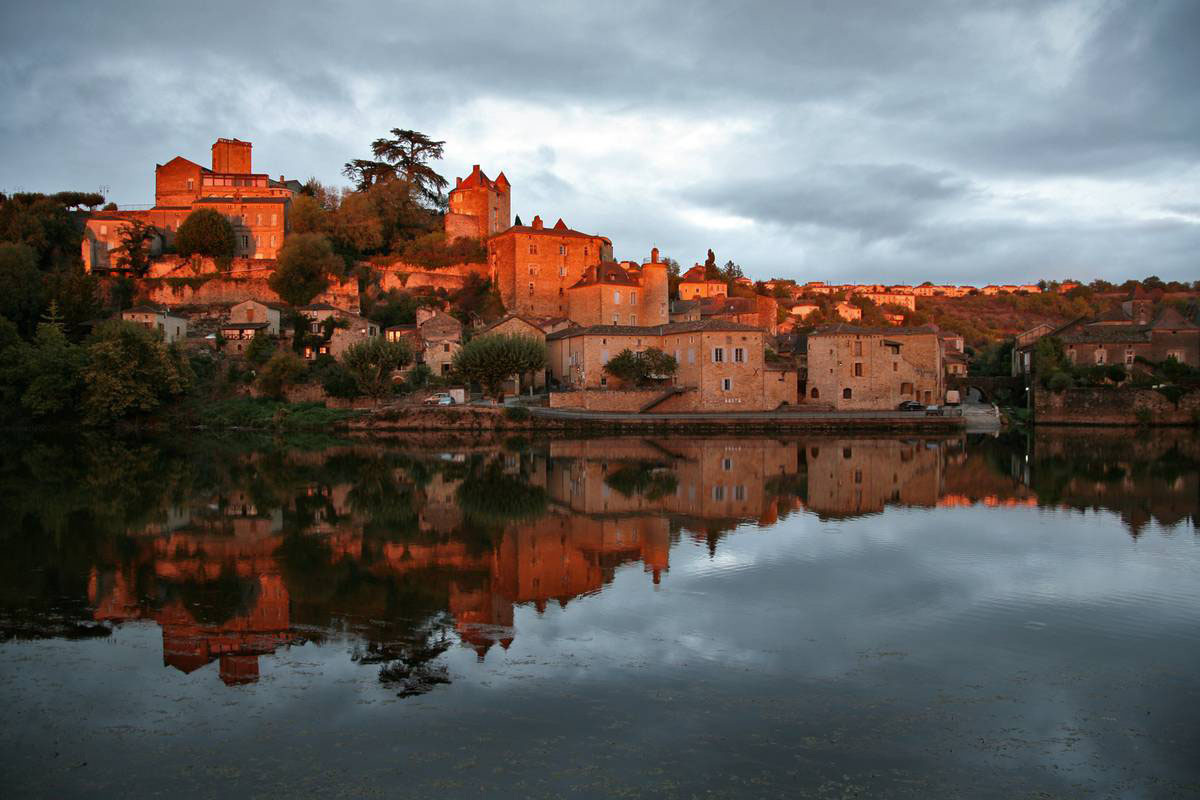
Built on a rocky promontory of more than 30m high, dominating the Lot, the commune of Puy-l'Évêque is a site registered as a Historic Monument since October 26, 1944 and placed in the zone of protection of architectural, urban and landscape heritage on June 14, 1995.
Behind the 13th century keep, the last vestige of the Bishops' Palace, the city offers superb ochre-colored medieval residences up to the quays where there was an active port, near the craft districts.
Between the vineyards and the river Lot, Puy-l'Evêque is in the heart of the Lot Valley and the Cahors vineyards with its picturesque villages, Luzech, clinging since the early Middle Ages to the two sides of a rocky isthmus, Albas, suspended from the cliff, its prestigious castles of Grézels, Bouysses, Chambert or Cayrou.
History & Heritage
Originally it was simply called Puy or Puech or Puig then in 1227, it was attached to the bishopric of Cahors. The bishop of Cahors, Guillaume de Cardaillac, took possession of the town in 1228 - during the Albigensian crusade - and gave it its current name: Puy-l'Evêque.
During the Hundred Years War, the English occupied it several times. It then took on its definitive form with its grouped habitat dependent on the episcopal palace constituting a castrum.
In the 13th century, the town extended from the present town hall to the Cale, on the banks of the Lot, where the wine shipments from Cahors were made. The river represented the essential means of communication, the "gabarres", flat wooden boats, transporting goods from Puy-l'Evêque to Bordeaux.
Puy-l'Évêque offers many vestiges of a rich past
The 12th century keep, the last vestige of the episcopal palace,
Superb seigneurial residences with beautiful golden stones,
The 15th century Chapel of the Blue Penitents,
The Saint-Sauveur Church, Historic Monument, from the 14th century. A rare fact, the religious building is located away from the old center,
The 15th century Calvary Cross (Monument Historique) in the cemetery,
The stroll through the hanging gardens leads from the Place de la Truffière to the hold, an old port where the barges docked, close to the activities linked to the transport of wine: boatmen, nail makers, bargemen.
And many other treasures and curiosities...
The 7 churches of Puy-l'Evêque
Puy-l'Evêque has 7 churches on its territory:
Saint-Sauveur (Puy-l'Evêque)
Notre-Dame-de-l'Assomption (Loupiac)
Saint-Pierre-es-liens in Martignac from the 13th century, and its 15th century mural paintings (Historical Monument),
Saint-Saturnin in Cazes attested in 1289 and reworked in the 16th century (Supplementary Inventory of Historical Monuments),
Saint-Sulpice (Courbenac),
Saint-Pierre-es-liens (Issudel),
Saint-Michel (chapel of Puy-l'Evêque).
The Tourist Office offers guided tours for groups: Reservation at 05 65 21 37 63
Town Hall
1 Pl. de la Truffiere,
46700 Puy-l'Évêque
Phone : 05 65 30 81 45
https://www.tourisme-lot.com/les-incontournables-du-lot/villages-remarquables/puy-l-eveque
Translated with www.DeepL.com/Translator
(free version)




